The apple harvest is in full swing! Have you visited an apple orchard yet? Tasted that fresh cider? If you’re interested in growing your own apples, here are some tips on how to start a (small) orchard! Every year we are blessed with more apples than we can eat. I make lots of applesauce and apple crisp and freeze bags of peeled and spiced apples to plunk into pie crusts all winter!
As a young woman, many moons ago, I worked at an orchard that made its own cider and fell in love with freshly squeezed apple cider. Every batch was a little different depending on the apples used in that pressing but all were delicious.
The orchard was started by the grandfather and great uncles of the present owners and included many varieties we now consider antiques such as Atrachan, Gravenstein, Baldwin, Grimes Golden, Wealthy, and Porter. When added to the mix along with Cortlands, Macs, Delicious and others it made for delicious cider. We bottled and sold it fresh as sweet cider in those pre-preservative days when it did not have to be pasteurized and old-timers came with their own barrels to fill for making hard cider.
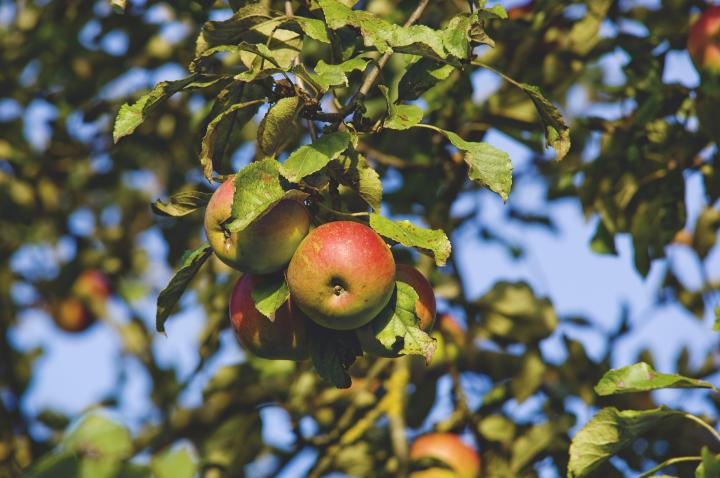
Things have changed since new strains of E. coli have appeared in cider and it has become difficult to find cider that is not heat or UV treated to kill the bad guys. One gardener I know has decided to start her own cider orchard in hopes of making enough sweet and fermented cider to keep her supplied from one harvest to the next. Any leftovers will become home-made cider vinegar. After purchasing a small parcel of land across the road from her house with the intentions of preserving it from development she wanted to make good use of it. She already has extensive gardens around her house and could have just expanded on that but thought an orchard would be better. Fruit to eat and beautiful blossoms in the spring, what could be better! Deciding on the trees was an enjoyable way for her to pass some time last winter.
Apple Varieties for Making Good Cider
Back when cider was the most popular drink, there were hundreds of apple varieties grown specifically for cider. Some had interesting names like ‘Merry Legs’. I can see that after a few glasses of the hard stuff your legs could get very merry indeed, but where did names like ‘Bitter Pew’ and ‘Slack-ma Girdle’ come from?
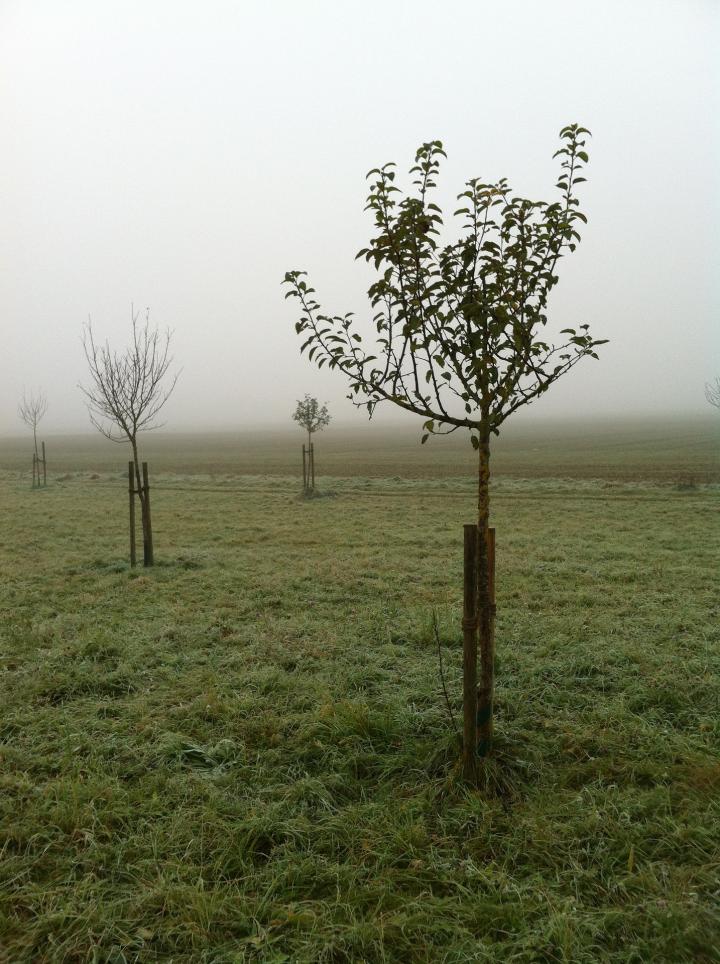
You only need about 36 apples to make a gallon of cider so a few trees will do and having different varieties is good for pollination. To achieve a good mix for hard cider you need to look for apples with qualities beyond sweetness such as high and low acidity, bitterness and sharpness, and high or low amounts of tannins. High acidity adds sharpness while high tannins add bitterness.
She went a little overboard and chose eight varieties, all heirlooms.
- Esopus Spitzenburg dates from before the Revolution. Chosen for its spicy yellow flesh good for sweet and fermented cider.
- Calville Blanc d’Hiver from the 16th century for its juicy sweetness.
- Grimes Golden from 1800 is another with crisp yellow flesh. A tart late season variety.
- Black Oxford from 1790 for sharpness, also good for pies.
- Roxbury Russet dates from the early 1600s. A later variety with aromatic white flesh high in sugar content.
- Rhode Island Greening from 1650 is a mid-season tart green apple with high acidity.
- Wealthy from 1860 has juicy sub-acid flesh good for pies and for adding acidity to hard cider.
- Northern Spy from 1800 is a late apple with a refeshing sub-acid flavor, also good for pie-making.
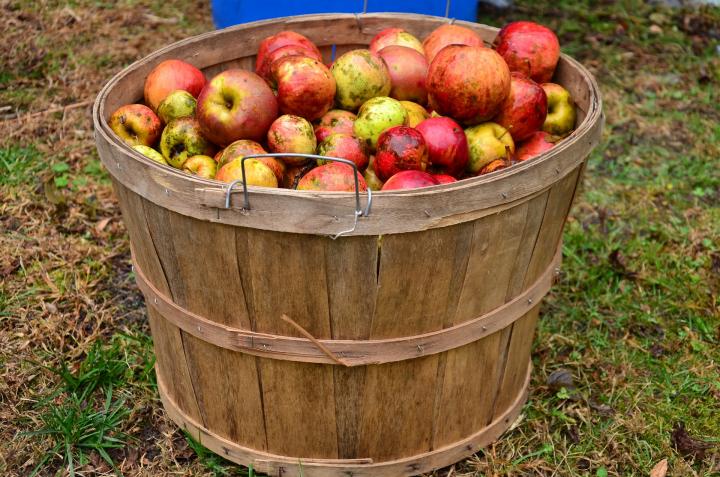
The best thing about cider apples is that they don’t have to look perfect so it is a good way to use those gnarly ones. She is not going to spray these apples so she can have an organic product.
Home Cider Press
I have always wanted a small home cider press. After making huge quantities of cider with a large hydraulic press at the orchard, I thought it would be easy to scale the process down and make just a few gallons at a time. I have done this with friends who had a hand press. We chopped up the apples in a food processor, dumped the pomace into a tight mesh bag and put it in the press. We added pressure by turning a large cast iron screw. Nothing like the 2,000 lbs of pressure that the hydraulic press achieved but enough to squeeze out a couple of gallons of sweet and tasty cider.
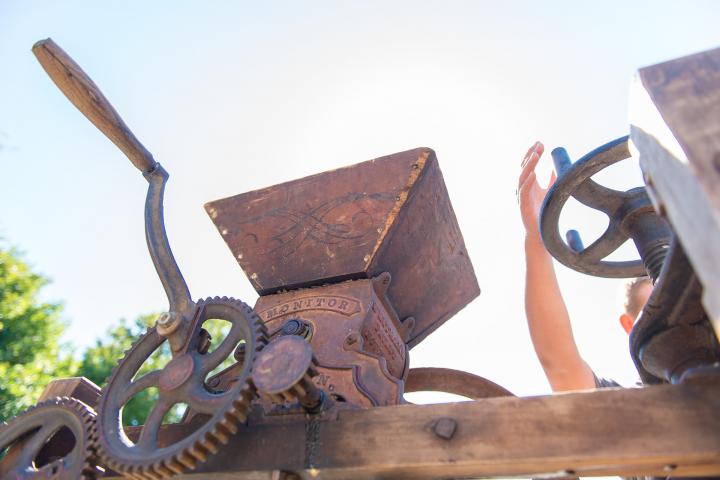
There are many types of home presses to choose from, both new and antique. Some even include a heavy duty grinder. Many can also be used for grapes if you would like to try your hand at winemaking.
If there is an orchard near you that makes its own cider stop in and watch the process. Be sure to take some cider home and enjoy a taste of the season.
Read how to make apple cider with an apple press.






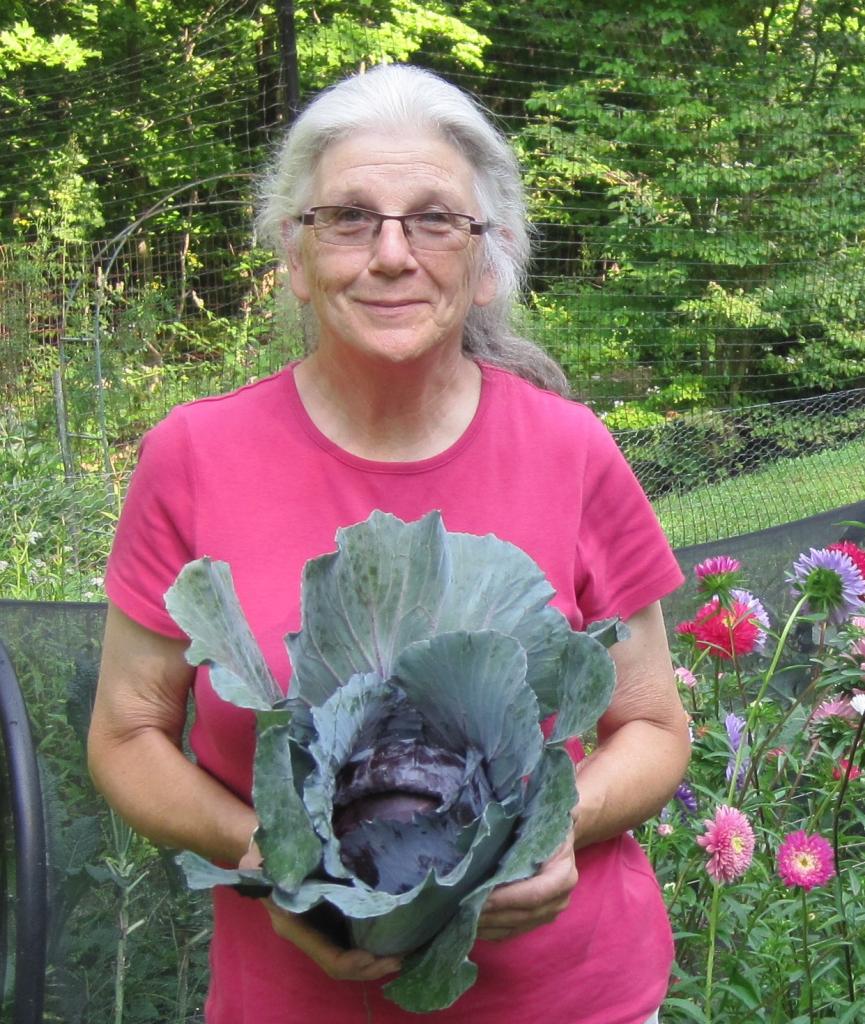








Comments